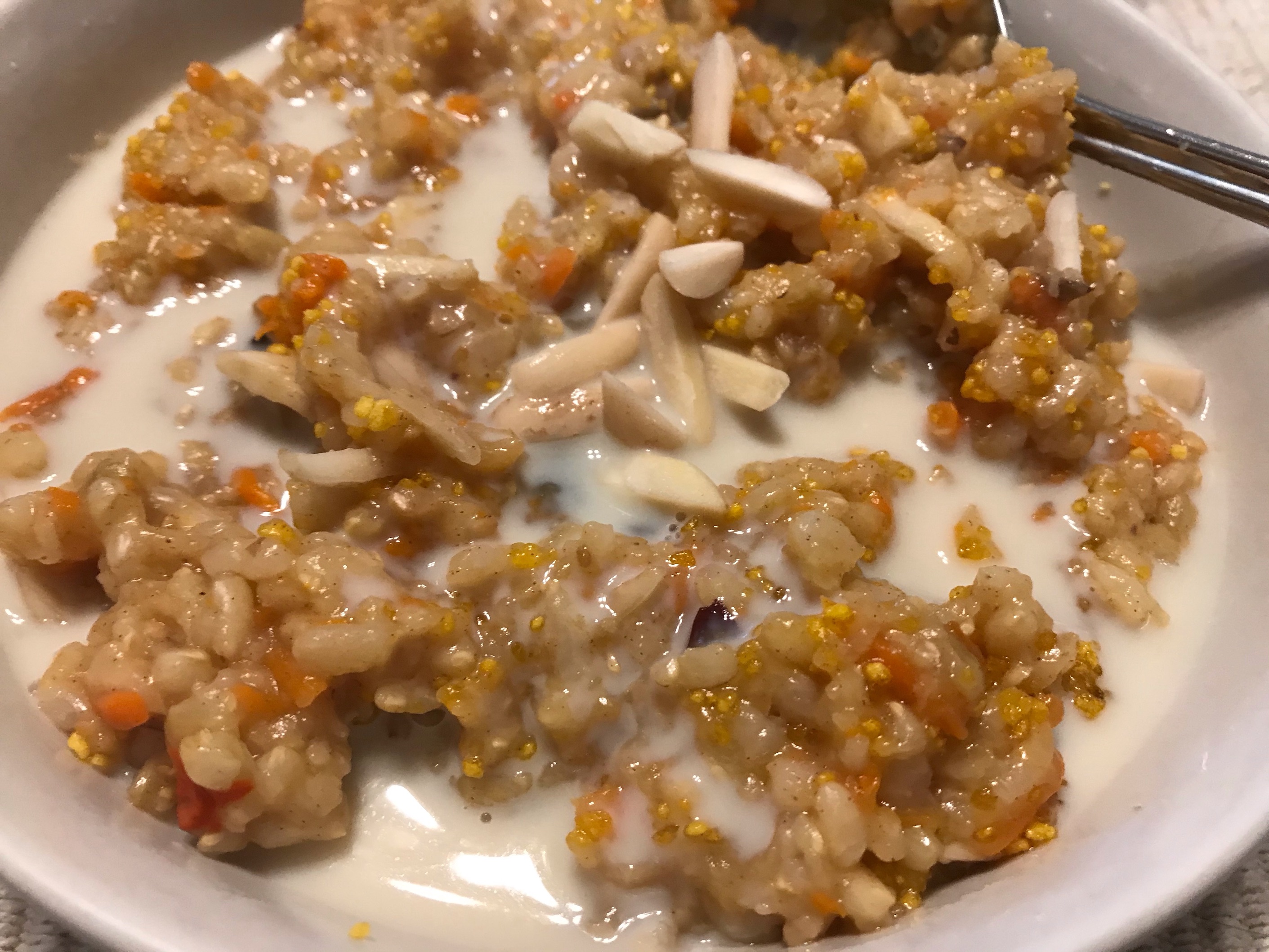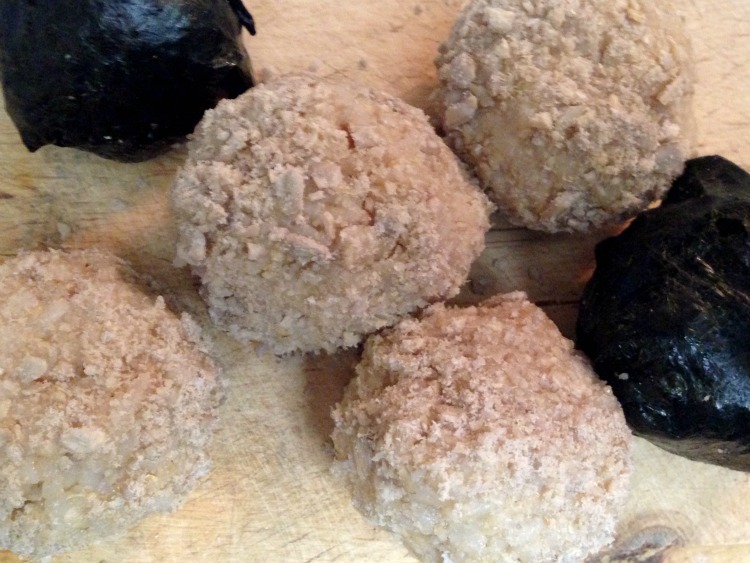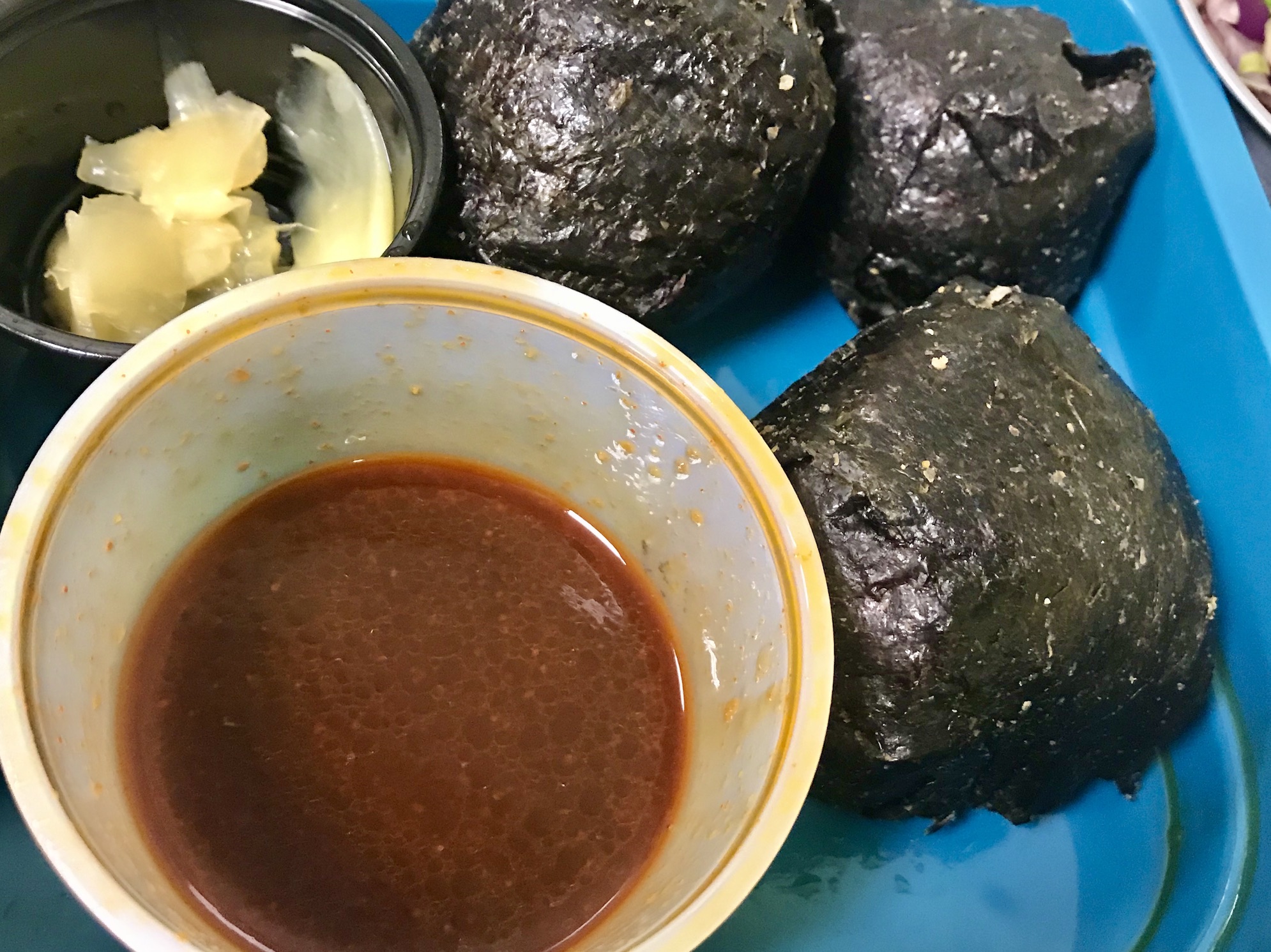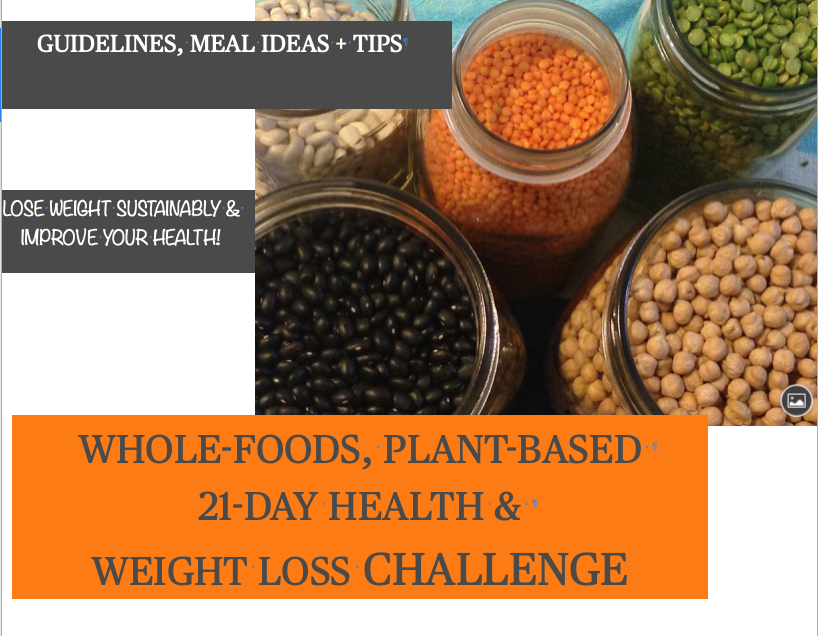Brown Rice and Macrobiotics -
Why it's a Favorite Staple Grain
Brown rice and macrobiotics. What is all the fuss about? Why is brown rice one of the most treasured whole grains in macrobiotics?
Could it be the nutty aroma of a fresh pot of brown rice simmering away in the pressure cooker? The nutty aroma which hints to its mildly nutty flavor and chewy texture? Perhaps It's the versatility, it's affordability of brown rice? Or even the ability to purchase brown rice in bulk to store for longer-term use adds to its allure during times of economic uncertainty.
Perhaps it's all the above, and more.
I personally think there's actually something magical about brown rice.
I know, call me crazy, but inhaling the steamy hot, nutty aroma after removing the lid once the pressure comes off of our old fashioned Presto Pressure Cooker, then stirring up the rice with a wood rice paddle, from bottom to top (well, some may say from top to bottom) is like a wonderful ritual. It brings me in the moment. All my senses awaken, as I look forward to plating up some steaming hot rice with a vegetable tofu stir fry, or QB Greens and whatever other protein-rich plant foods we are having with the rice.
The early Japanese pioneers who brought macrobiotics to the West elevated brown rice preparation to an art. They introduced us to brown rice, and we've been enjoying the fruits of their labors ever since.
Serving it up, and garnishing it very simply with a dab of umeboshi plum (or plum paste), or homemade gomashio (roasted sesame seeds and sea salt), and/or sliced scallions makes it a super easy primary staple grain. Serve with a variety of greens and vegetables, and possibly tofu or beans, and you have a perfect, simple meal. Plus, reheating it by steaming it makes it taste fresh made. And, there are so many great ways to use leftovers.
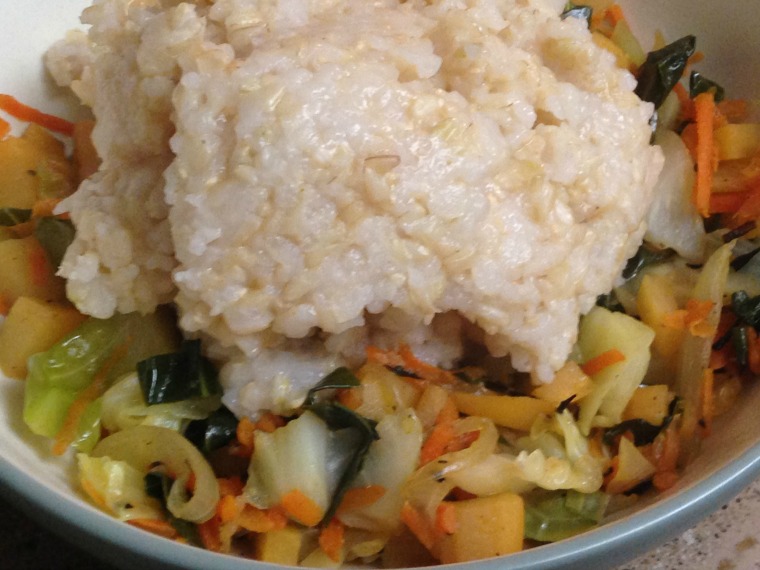 If you love stickier rice, try short-grain brown rice! If not available, try medium-grain. For even stickier, with a touch of sweetness, sweet rice is the best.
If you love stickier rice, try short-grain brown rice! If not available, try medium-grain. For even stickier, with a touch of sweetness, sweet rice is the best.- Home
- Health Benefits of Carrots
- Health Benefits of Potatoes
- Brown Rice Benefits
Brown Rice - Nature's Most Centering Food
In macrobiotic circles, brown rice is considered the most perfect whole grain. It is seamless, has the perfect yin/yang balance of all the grains, is very nutritious, and is considered the most centering of all foods.
I know hands down, once you become accustomed to cooking and eating whole grains, especially brown rice, you will understand why whole grains are the principal foods in macrobiotic diets, and diets of traditional populations world wide.
The keys to deriving the maximum nutritional, energetic and even spiritual benefits from nature's most energizing foods ~ especially for those who do not have a history of eating grains in their whole form / nearly whole form ~ is learning how to gradually increase consumption, and how to appropriately select, prepare, serve, and thoroughly chew them.
A Little Background on Brown Rice
In Aveline Kushi's Complete Guide to Macrobiotic Cooking: For Health, Harmony and Peace, Aveline shares stories of her youth, growing up in a rural village of Japan. Yearly ceremonies were conducted as villagers came together to sow the seeds, grow and harvest rice. These days, most Japanese and Asian people consume polished rice, however, during Aveline's youth, prior to World War 2 and the Industrial Revolution, that was not the case.
During the early days of bringing the macrobiotic diet and philosophy to the West, Aveline and husband Michio Kushi traveled the United States in search of rice growers who held to the more traditional methods of growing and harvesting rice. Lundberg out of California was the company they chose to partner with. (You can read more about the pioneers of the modern macrobiotic movement on my blog, here.)
As Wendy Esko states in the preface of her book, The Big Beautiful Brown Rice Cookbook, The Word's Best Brown Rice Recipes, "When I am quietly sitting and enjoying a bowl of freshly cooked brown rice, I often find myself thinking, "This is the simplest, yet the most delicious and satisfying food I have ever eaten."
Both Don and I agree with Wendy. Brown rice is the best food for hitting all the bells ~ cooking and eating brown rice is truly a spiritual experience. Or, it should be. That is, if it's prepared right. Which is what this article is about, the basics for preparing the best brown rice!
For more recipes and information about starting a macrobiotic diet, be sure to download a copy of my free ebook, How to Feel Great & Improve Your Health with a Macrobiotic Diet. More FREE Macrobiotic books / cookbooks coming soon in 2024!
For my top recommended condiments for making delicious, healthy, vegan macrobiotic food, including my favorite condiment to put on top of brown rice ~ umeboshi plum or paste ~ click here.
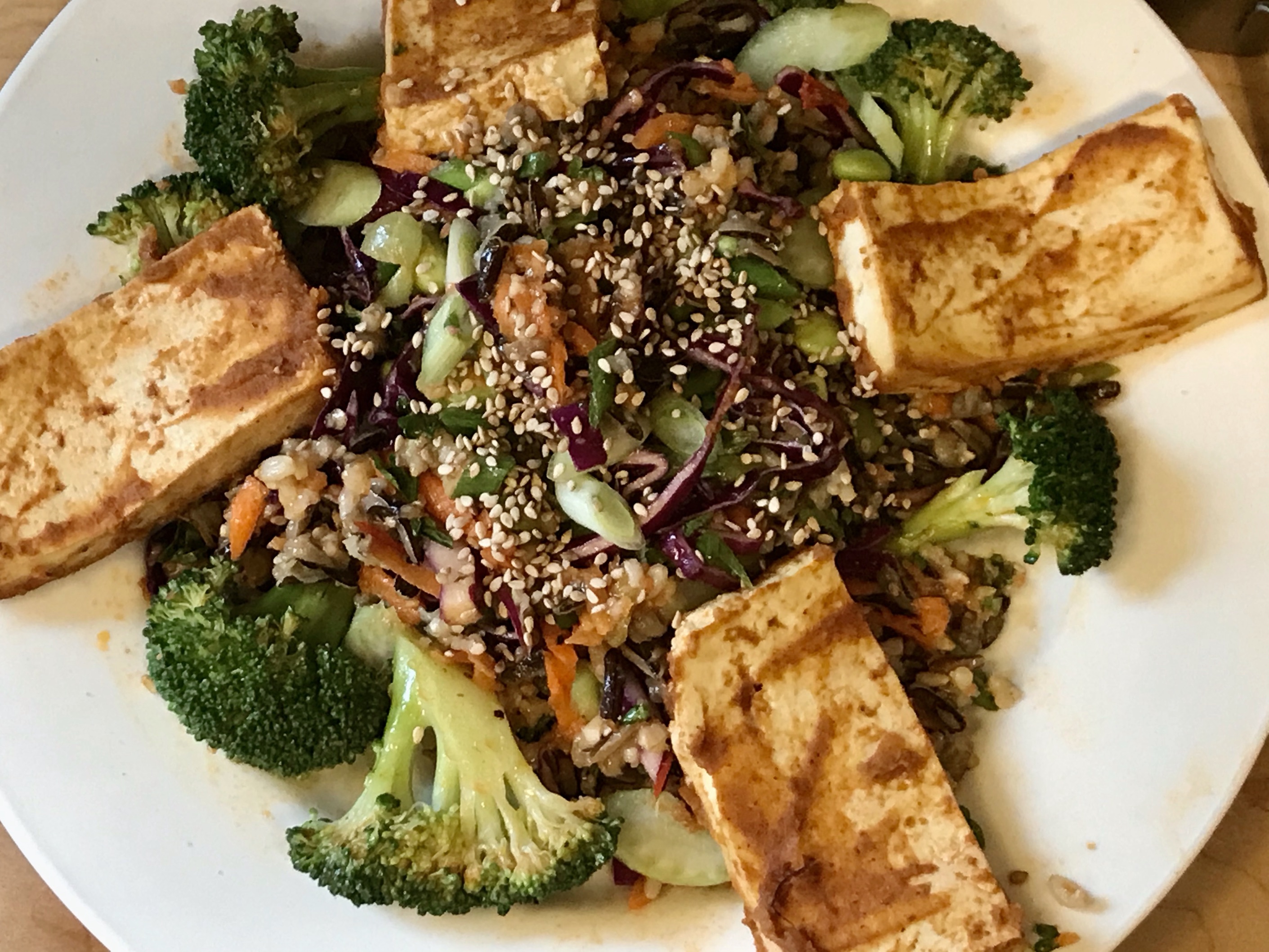 Brown Rice Blend of several varieties ~ Brown Rice Salad recipe from Forks Over Knives online cooking course offered through Rouxbe Online Cooking School Brown Rice Blend of several varieties ~ Brown Rice Salad recipe from Forks Over Knives online cooking course offered through Rouxbe Online Cooking School |
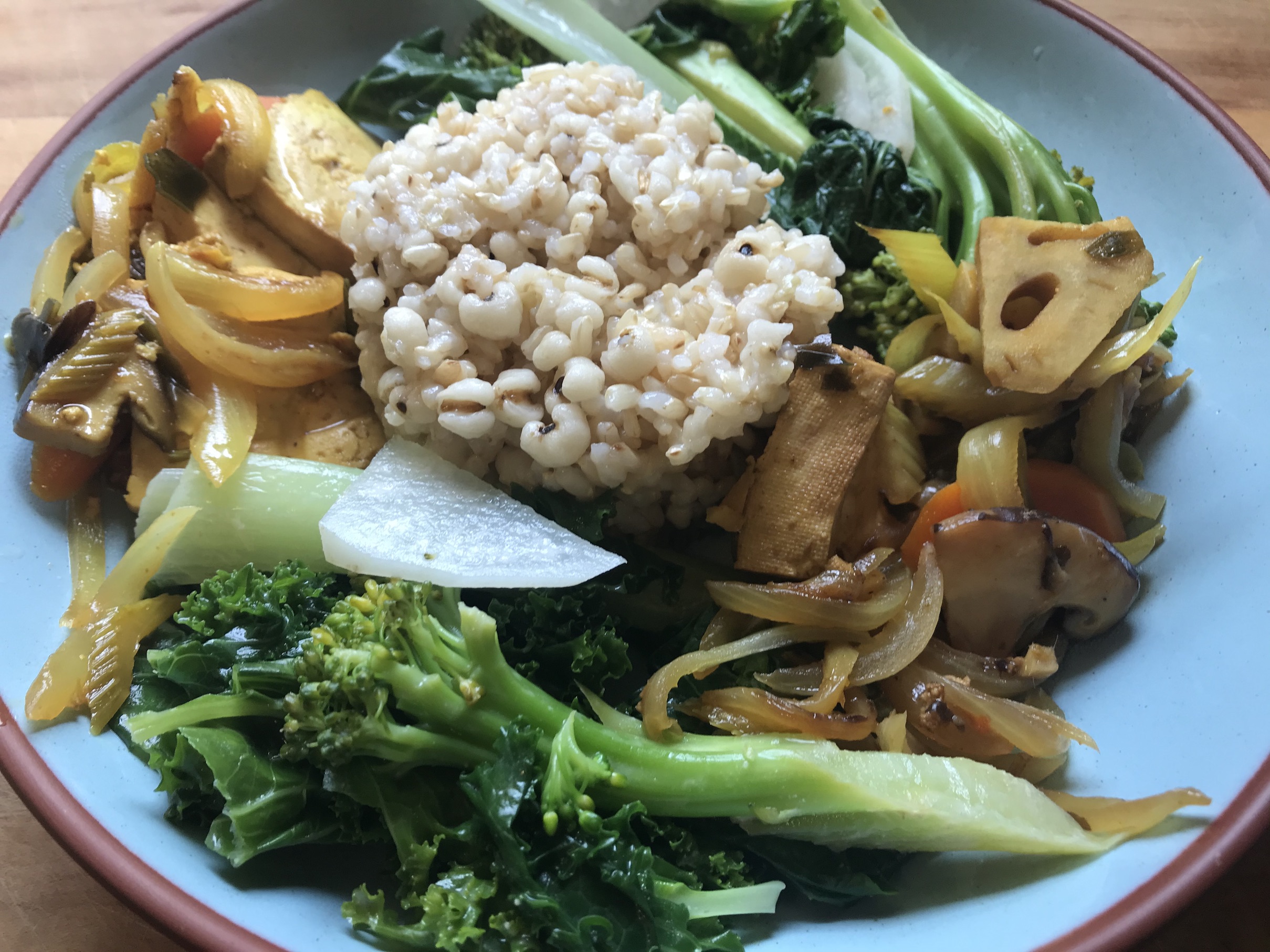 'Macrobiotic Meal' Brown Rice Cooked w/ Hatomugi (Chinese Pearl Barley), with Sweet Sour Tofu, Vegetables Cooked w/ Lotus Root 'Macrobiotic Meal' Brown Rice Cooked w/ Hatomugi (Chinese Pearl Barley), with Sweet Sour Tofu, Vegetables Cooked w/ Lotus Root |
A few more tidbits about brown rice...
There are actually hundreds of varieties of brown rice. Who knew?
Some types of rice are more glutinous than others. Short-grain and sweet brown rice are good examples. The shorter, stubbier grains are higher in the starch amylopectin, which makes these types of rice sticky when cooked. Long-grain brown rice varieties are higher in amylase, another starch, which creates a firmer rice that that tends to remain separated when cooked.
Brown rice is naturally gluten-free, and one of the least allergenic grains. The bulk of rice consumed in the states is grown here, and is non-GMO.
According to Esko, rice is the most widely used food crop (for human consumption) on the planet; although wheat and corn production are slightly higher, much is used for feeding livestock. "As the twenty-first century began, about 600 million metric tons of rice were being harvested annually around the world, nearly all for human consumption."
Asian countries remain the largest consumers of rice with billions of people deriving at least one quarter and as much as 80 percent of their total calories from rice.
The macrobiotic movement helped usher in, or perhaps, revive the natural food movement in the West. They helped bring brown rice to households across America and Europe. If you have yet to experience the subtle yet profound joy of cooking, smelling and eating a fresh cooked bowl of brown rice, it's time you give it a try!
How To Cook Perfect Brown Rice & Ways to Use Leftovers
- Check out the following articles to learn how to choose the best brown rice for your needs, and how to prepare perfect brown rice, as well as how to store and reheat leftovers so they taste fresh made.
- Check out these great recipes for using leftover brown rice, including Brown Rice Breakfast Porridge, Brown Rice Balls, Brown Rice Sushi, Brown Rice 'Buddha Bowls' and a few different dressings, a delicious Sweet & Savory 'Refried' Brown Rice, and more.
- Learn how to prepare Quick Blanched Greens &/or Vegetables
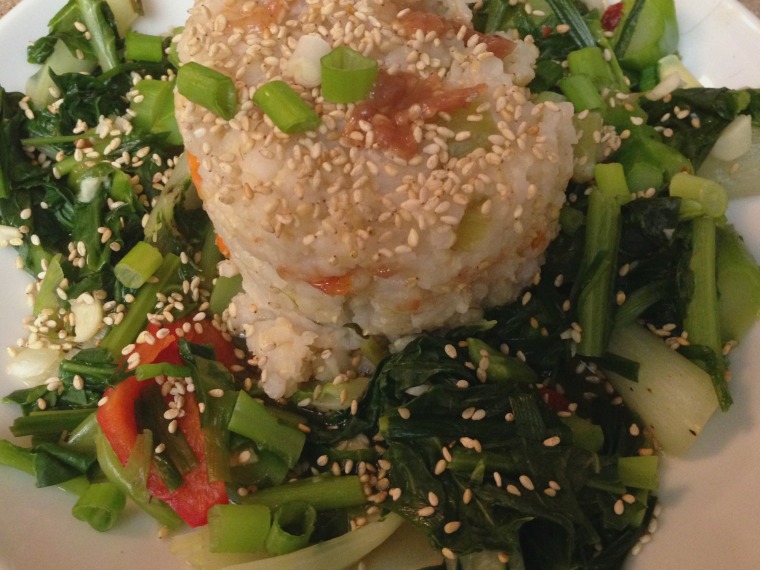 Perfect Cooked Brown Rice with a Medley of Greens & Vegetables Perfect Cooked Brown Rice with a Medley of Greens & Vegetables |
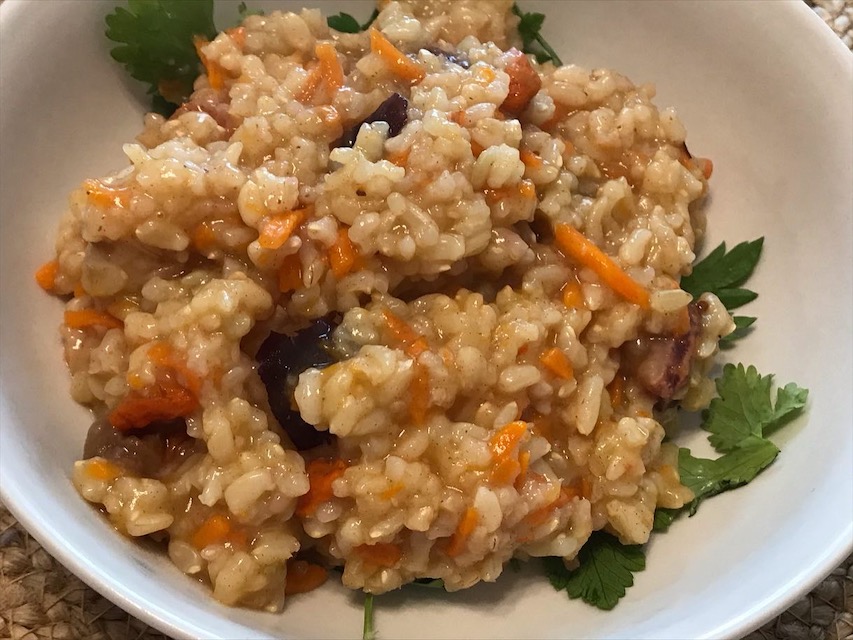 Brown Rice Porridge with Raisins & Shredded Carrots Brown Rice Porridge with Raisins & Shredded Carrots |
>>More Plant-Based Meal Prep / Batch Cooking Suggestions & Tips
>>Vegan (Pure Vegetarian) / Plant-Based Diet Basics
>>>Simple Japanese Dashi Broth
>>>FREE How To Lose Weight & Feel Great with a Macrobiotic Diet ebook!
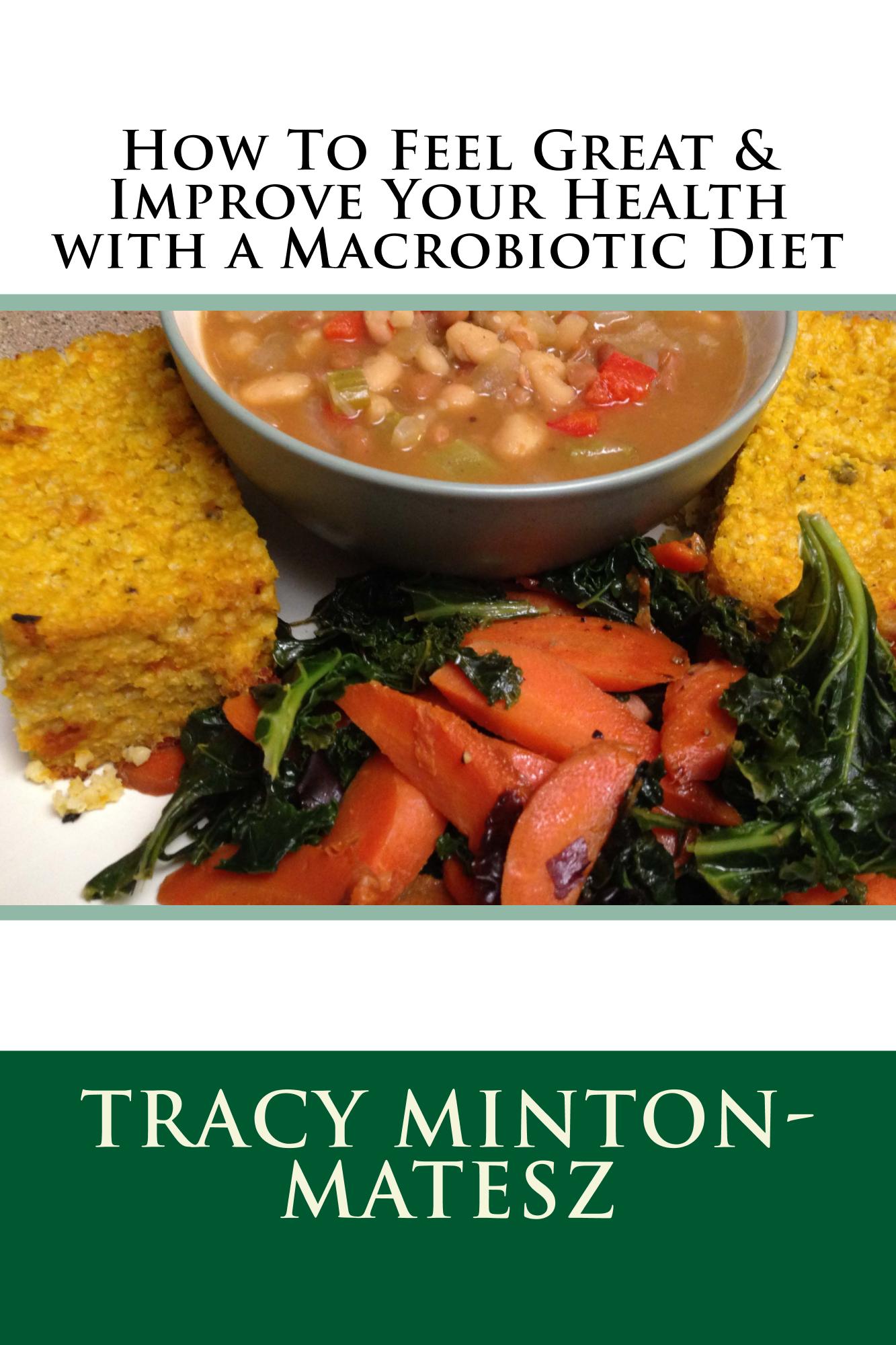
For more recipes, check out my FREE Macrobiotic Ebooks.
How To Feel Great & Improve Your Health with a Macrobiotic Diet, now available, with more to come!
